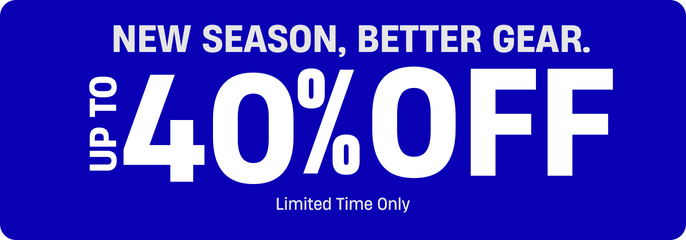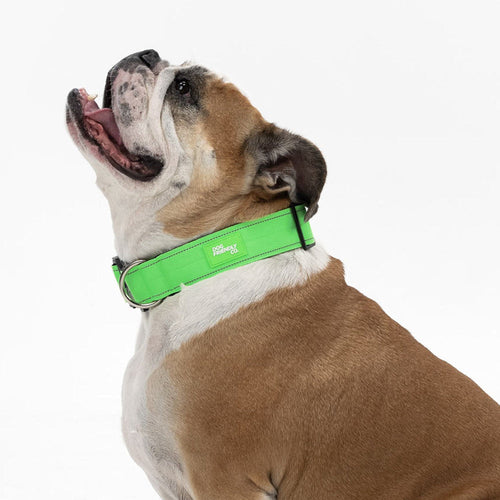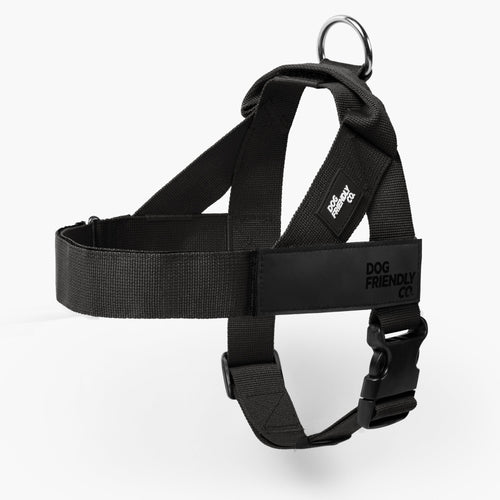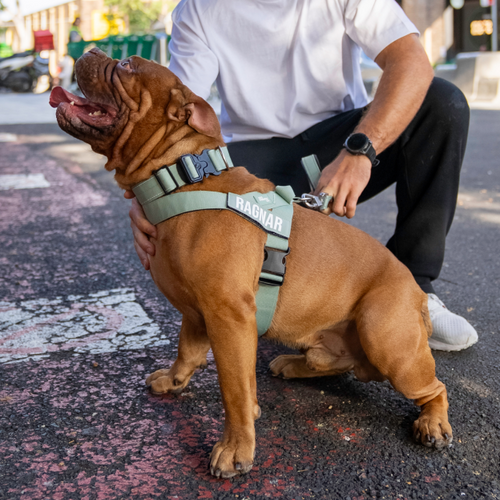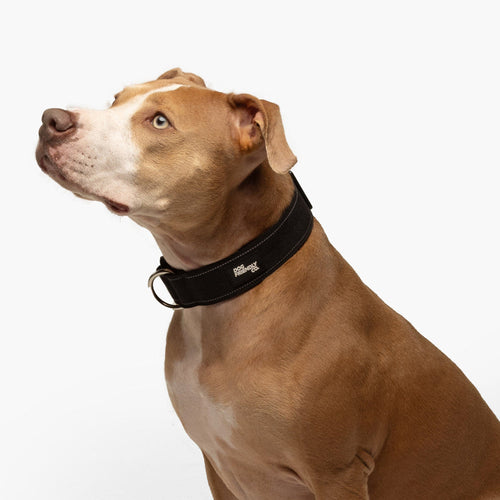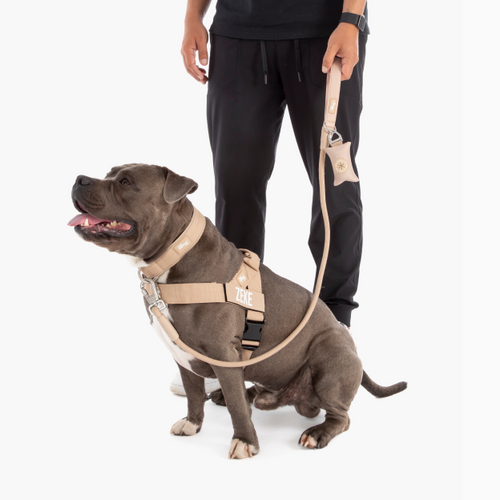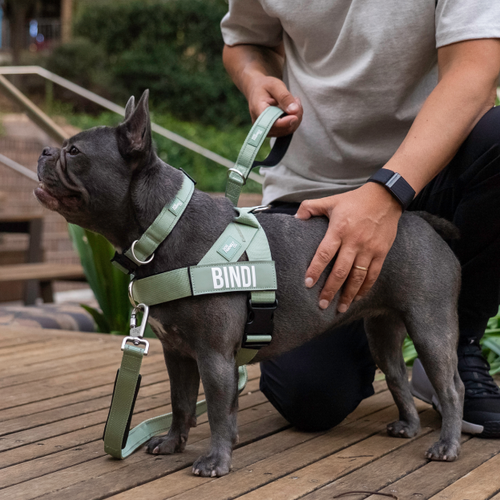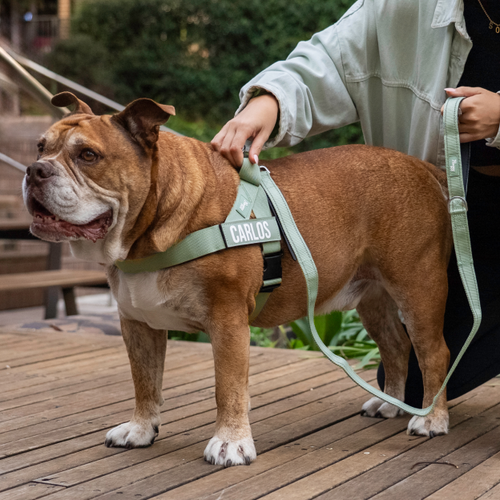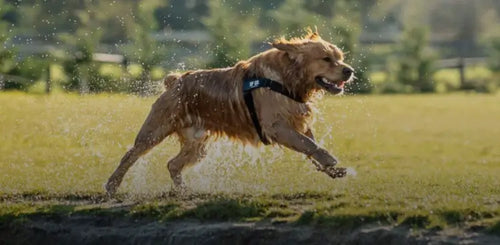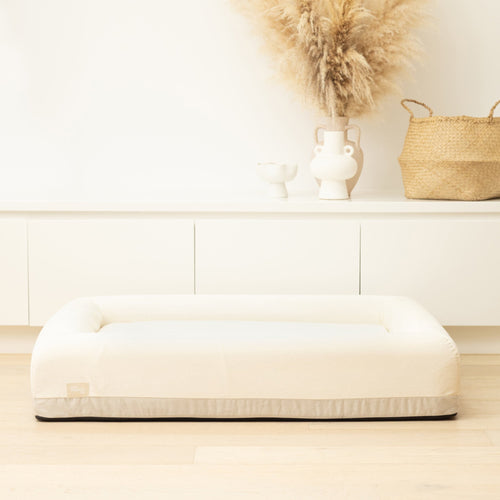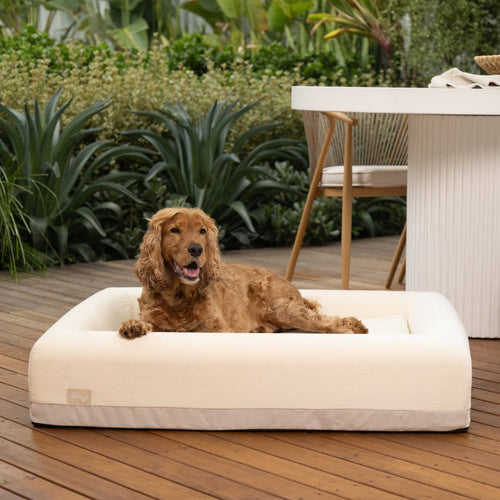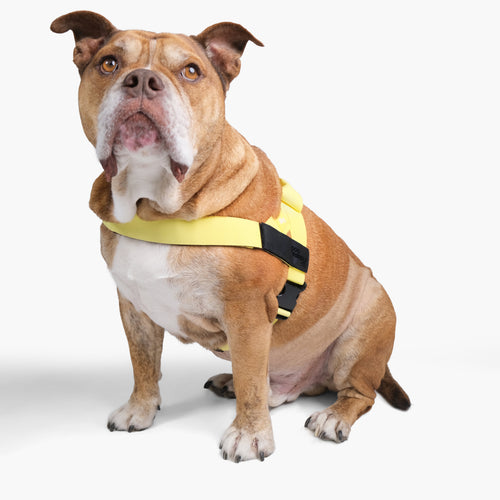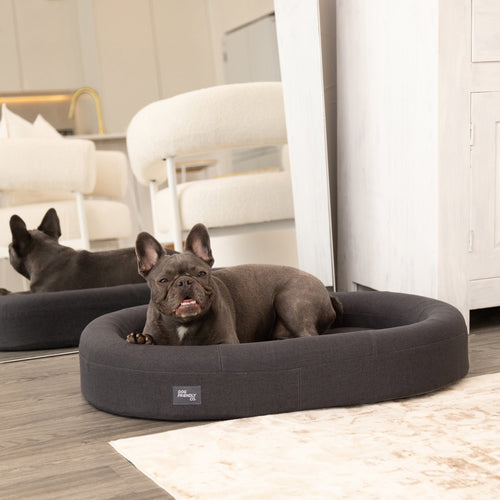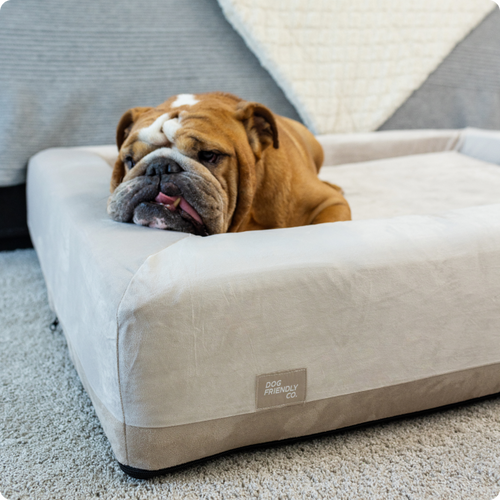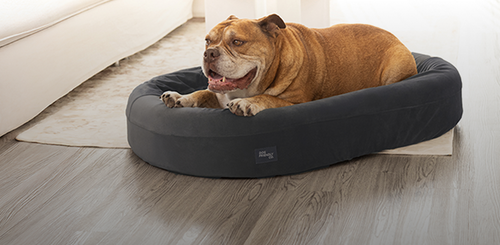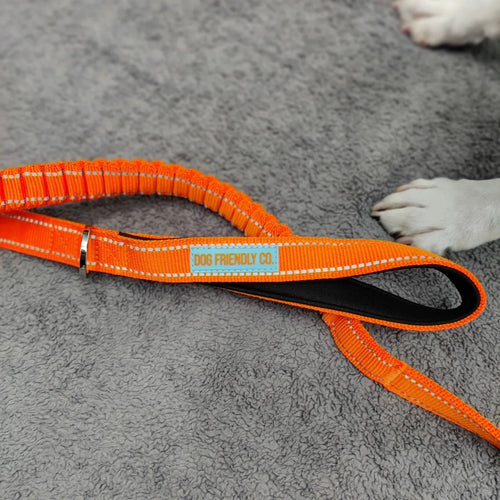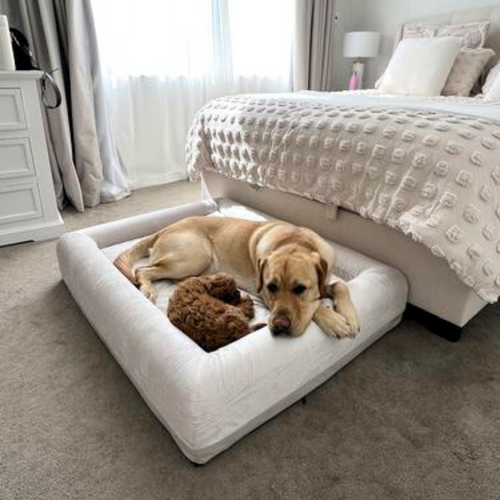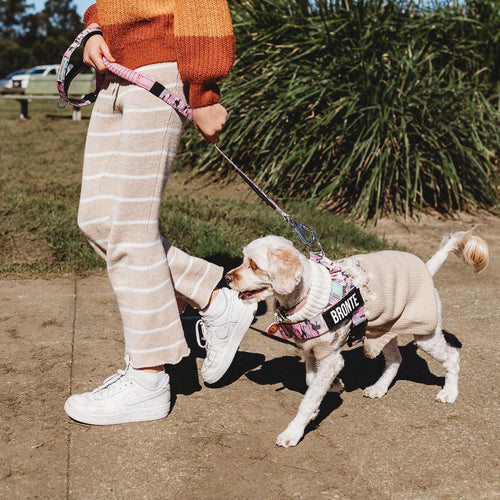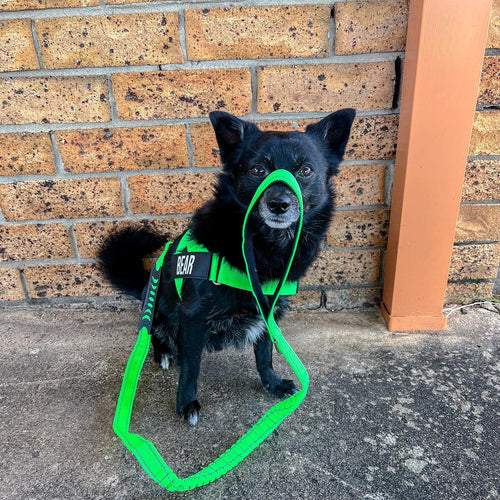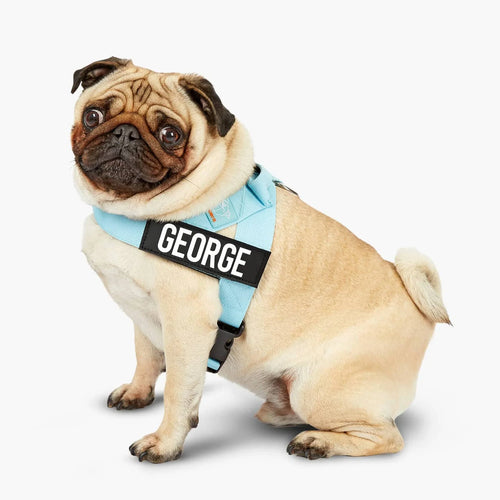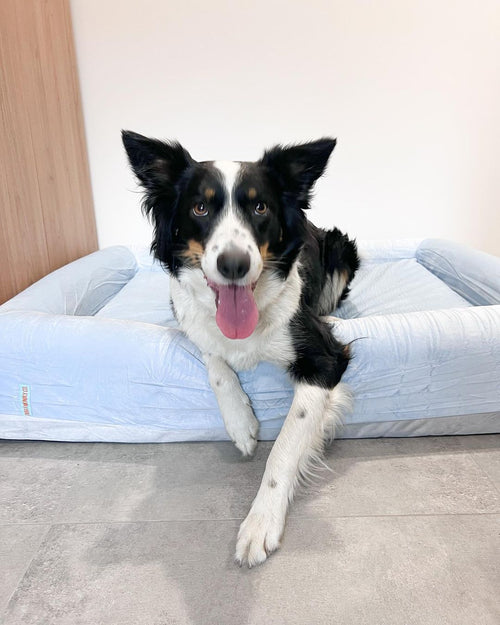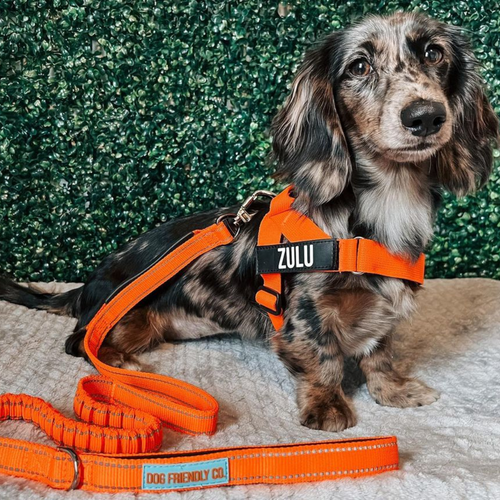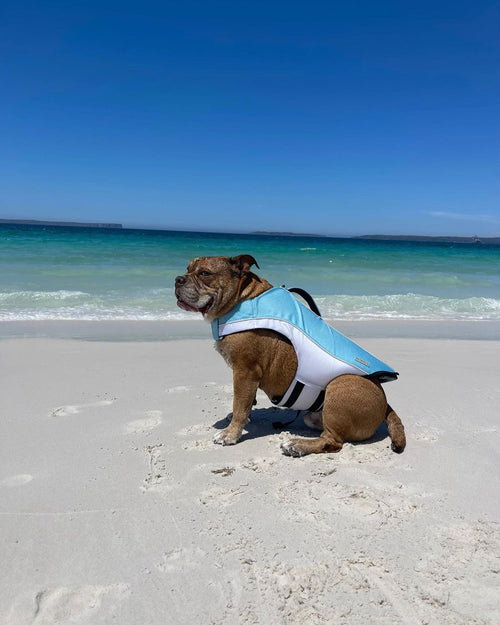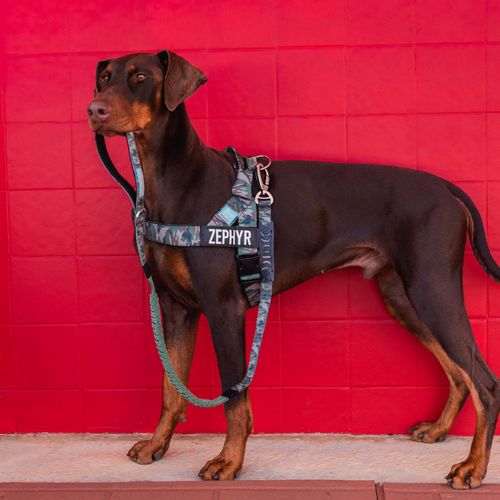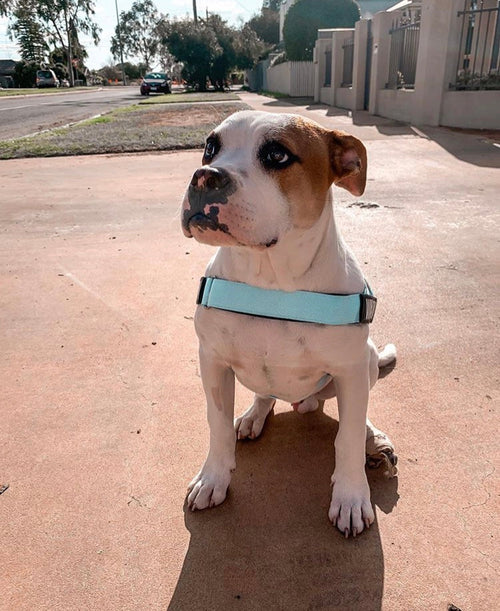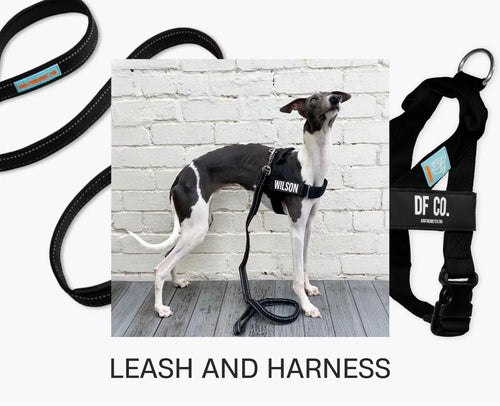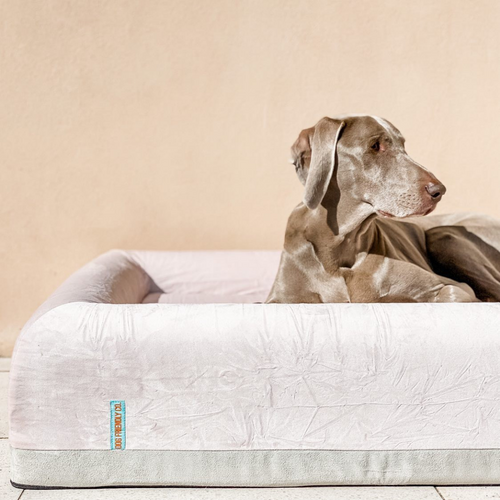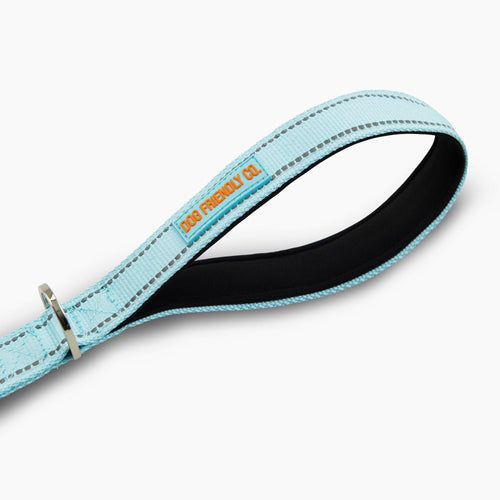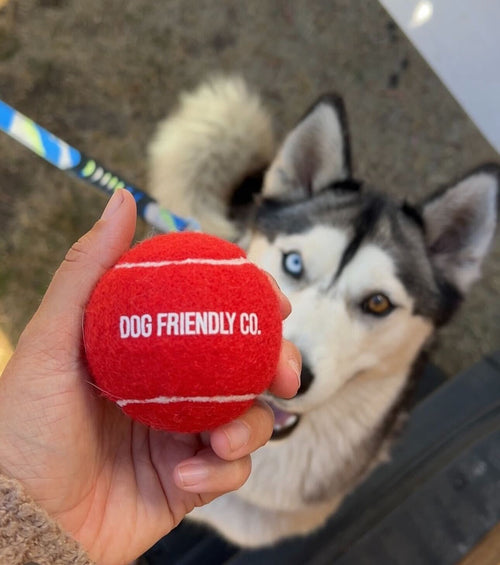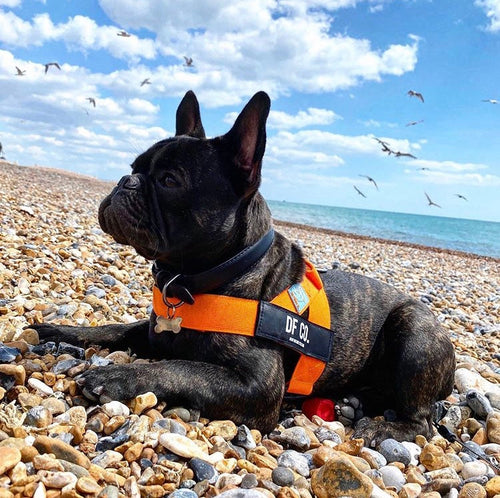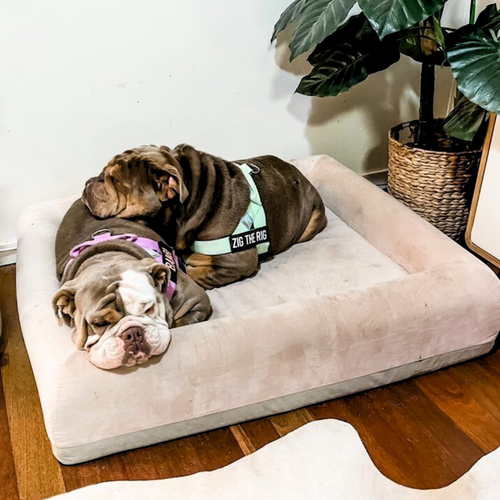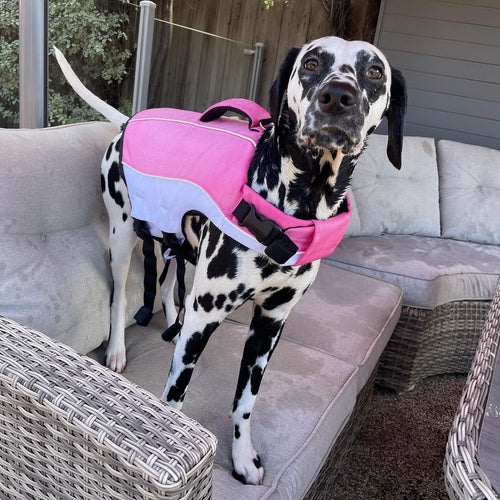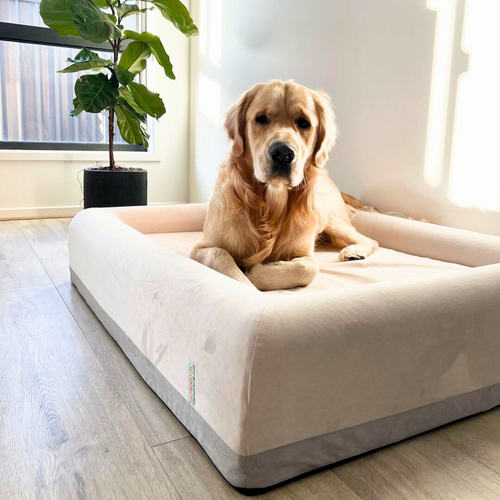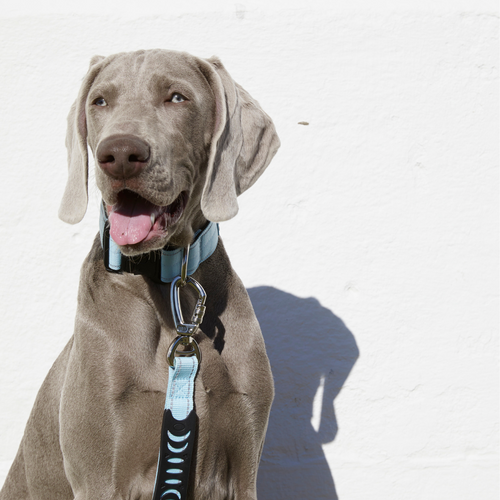One of the biggest questions that pops up for dog owners is whether a collar or a harness is better for training. Both are made to help guide and manage your pup while keeping them safe, but picking the right fit can make a world of difference to their comfort—and help you enjoy the process more, too! In this blog, we’ll take a closer look at dog collars and harnesses, the pros and cons of each, and help you figure out which option might suit your dog best.
What Dog Collars Are (and Why They Matter)
Collars play a key role when training your dog. They’re not just part of the outfit; they’re there to help guide your dog, keep them comfortable, and make training a whole lot easier.
So, what exactly is a collar, and what are the different types?
A dog collar is a staple for most pups, serving multiple purposes, from holding ID tags to helping with training. There are a few types to choose from, such as flat collars for everyday wear, martingale collars for better control, and training collars for specific behaviour goals.
Why do they matter for everyday life and training?
You’ll likely use a collar not just during walks but as a staple of your dog’s everyday activities. They help with identification through tags, ensuring your dog is easily recognised if they ever get lost. In training, collars paired with a lead help guide your dog’s behaviour, giving you more control while reinforcing positive habits and making sure they’re safe and comfortable.
And how do they work in training?
As mentioned above, collars are used with leads to guide your dog’s actions, with some, like prongs or choke collars, designed for corrective training. However, these methods are a bit controversial, so it’s important to approach them carefully and be aware of the potential effects they may have on your dog.
What You Need to Know About Dog Harnesses
Harnesses are considered a more comfortable and safer option than collars. They’re also designed to give you better control while keeping your dog comfortable, especially on those training sessions and daily walks.
What are dog harnesses, and what types are available?
A dog harness is a piece of gear made to fit around your dog’s body, usually around their chest and back. This design provides more control and comfort compared to your traditional dog collar. There are several types to choose from: back-clip harnesses, which attach at the dog’s back and front-clip harnesses that allow for better control during walks.
Then, there’s also step-in harnesses for easy fitting, and no-pull harnesses to prevent your dog from pulling too much on the lead. The latter is especially useful if your pup tends to pull on walks, as they help reduce strain on their neck and make it easier for you to direct their movement.
How do harnesses help in walking and training my dog?
Harnesses are perfect for daily walks and offer better handling, especially for dogs that may not respond well to collars. They're also great for training, especially for pups with sensitive necks, respiratory issues, or those who may experience discomfort from traditional collars.
The Perks of Using a Collar for Dog Training
Training your dog doesn’t have to be complicated. Collars can be a simple, effective tool that helps guide your dog with ease. Here’s how they make training easier:
- Control and Simplicity: Collars, especially when used with a leash, give you a straightforward way to direct your dog’s movements and behaviour. This makes training sessions smoother, helping both of you stay focused and efficient.
- More Direct Communication: A collar allows for more direct communication through the leash, offering clear signals that help your dog understand what’s expected. This can be especially helpful for training methods that rely on subtle cues.
- Collars for Well-Behaved Pups: For dogs that are already trained, a collar can be an easy, low-maintenance training option. It’s perfect for maintaining good habits without adding any extra steps or complicating the process.
- Corrective Training: Certain collars, like prong collars, are used for specific behavioural correction. However, it’s important to approach their use with caution and to make sure they’re suitable for your dog’s temperament and needs.
How Harnesses Make Dog Training Easier
Harnesses can make training your dog simpler and more comfortable for both of you. Below are ways they help and the benefits they bring to the table:
- Reduced Risk of Injury: They’re a great option for dogs that tend to pull or have respiratory concerns. That’s because harnesses distribute the pressure of the leash evenly across your dog’s body, reducing strain on sensitive areas like the neck, spine, and trachea.
- Better Control for Larger/Stronger Dogs: For dogs that are a bit more powerful or excitable, harnesses provide a more solid grip. This means you’ll be able to guide their movements from a more secure stance, especially during training sessions.
- Ideal for Dogs with Behavioural Issues: If your dog struggles with pulling, lunging, or jumping, a harness can help redirect their attention. It gives you the ability to gently guide them and refocus their behaviour, making training more effective.
- Comfort: Overall, harnesses are a more comfortable option for many dogs. They’re especially great for dogs with sensitive necks or breeds that have respiratory issues, offering a more natural fit during training and walks.
Which One is Better for Training My Dog?
Picking between a collar and a harness can feel a bit like choosing the right lead for your dog. It really depends on what fits best and helps you work together more easily. That said, it helps to look at your dog’s needs and training goals to figure out the best match.
For puppies and beginner dogs
Harnesses are often a go-to for young or inexperienced dogs because they help protect their little bodies from strain, while still giving you enough control to teach leash manners gently.
For dogs with behavioural issues
If your dog tends to pull, lunge, or get a bit too excited, a front-clip harness can help steer them back in line without adding pressure to sensitive areas. Collars can still play a role, but they need to be used carefully to avoid causing discomfort.
For dogs that are already well-behaved
Dogs that already know how to walk politely on a lead usually manage well with just a collar. It keeps things simple, without needing extra gear, while making training sessions and outings feel more relaxed for both of you.
For sensitive dogs
Does your dog have a delicate neck? They might do better with a harness, as it spreads pressure evenly across the body instead of focusing on one vulnerable spot. The same applies to dogs with respiratory problems or past injuries.
For strong or larger dogs
A harness can give you a much steadier hold on bigger, more powerful breeds. Using a harness will also help prevent any unexpected slips or dashes if they get a sudden burst of energy.
For positive reinforcement training
Harnesses naturally suit positive reinforcement training because they help keep dogs comfortable and relaxed. This makes it easier for them to stay focused and enjoy the training process.
When Using a Collar Might Not Be Best
Some dogs are just too strong, too wriggly, or too sensitive for a collar to do the job well, and that’s when it might create more stress than necessary. Here are situations when a collar is not the best fit:
- Potential for Injury: If your dog tends to pull, a collar can put a fair bit of strain on their neck, throat, and even their spine. This can be especially rough on dogs with shorter necks or breathing troubles, where even a little extra pressure might cause discomfort or injury.
- Limited Control for Strong Dogs: When you’ve got a big, powerful dog pulling on the other end of the lead, a collar might not give you much help in steering or slowing them down. In those moments, it can feel like you’re just along for the ride instead of being in charge.
- Negative Associations: For some dogs, collars can get tied up with bad experiences, especially if they’ve been used for corrective training. Over time, this can lead to feelings of anxiety, fear, or just an overall sour attitude about heading out on a lead.
A Few Drawbacks of Using Harnesses in Training
While harnesses can be great for walks and your dog’s comfort, there are times when you might need something that offers more direct guidance. Let’s look at a few things to keep in mind when using a harness for training:
- Some Harnesses Can Be Bulky: Some harnesses can feel a bit like putting your dog in a full-body suit. This can be especially tricky for smaller dogs who might struggle with the extra bulk, making it harder to get them suited up and ready for action.
- Less Direct Control in Certain Situations: While harnesses are perfect for walking and general guidance, they don’t always provide the same control as collars do. This can be particularly noticeable when you need to redirect your dog’s behaviour quickly, as the harness doesn’t give the same instant feedback that a collar and leash might offer.
- Requires a Proper Fit: One of the main downsides of using a harness is that it needs to fit exactly right. An ill-fitting harness can cause rubbing, chafing, and discomfort for your dog. That’s why it’s important to check that it’s snug but not too tight, so your dog stays comfortable while you’re working together.
When to Use a Collar vs a Harness in Training
Ultimately, it all comes down to what works best for your dog’s needs, training stage, and whether you’re dealing with any specific challenges. So you might be wondering:
When do I use a collar for training my dog?
Collars work best when your dog is already well-mannered on the lead and doesn't require much extra handling. They’re ideal for those easygoing walks, or when your dog just needs a quick ID tag for outings, as they keep things simple and fuss-free.
What about a harness?
Harnesses are the go-to for dogs still mastering their leash skills, including those that pull or jump during walks. They're also the preferred choice for dogs that might have neck issues or respiratory concerns, offering more comfort and reducing strain.
Can I use both a collar and a harness?
In some cases, it’s perfectly fine to use both—a collar for your dog’s identification and a harness for walks or training. This combo ensures your dog stays safe, comfortable, and under control, regardless of your activity for the day.
Making the Right Call for Your Dog’s Training
Training your dog is all about finding what works best for them. Similar to picking out the right toy, you want something that fits their needs and keeps them happy. On that note, both collars and harnesses have their place in training, but the right one depends on your dog’s size, breed, behaviour, and health. A collar might be the go-to for a dog that’s already well-trained and well-behaved, while a harness could be more suited for dogs still learning the ropes or those with special health concerns.
Take a moment to think about your dog’s comfort and needs before deciding, and if you’re not sure, it’s always a good idea to reach out to a professional dog trainer or veterinarian. These experts can point you in the right direction for your pup’s training.
